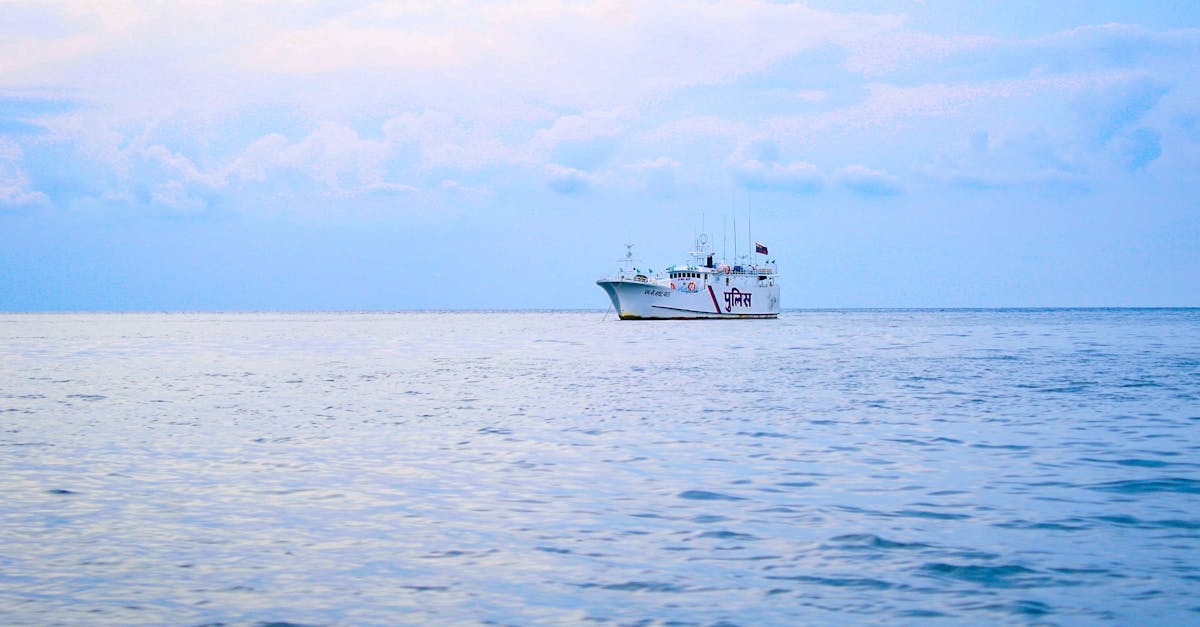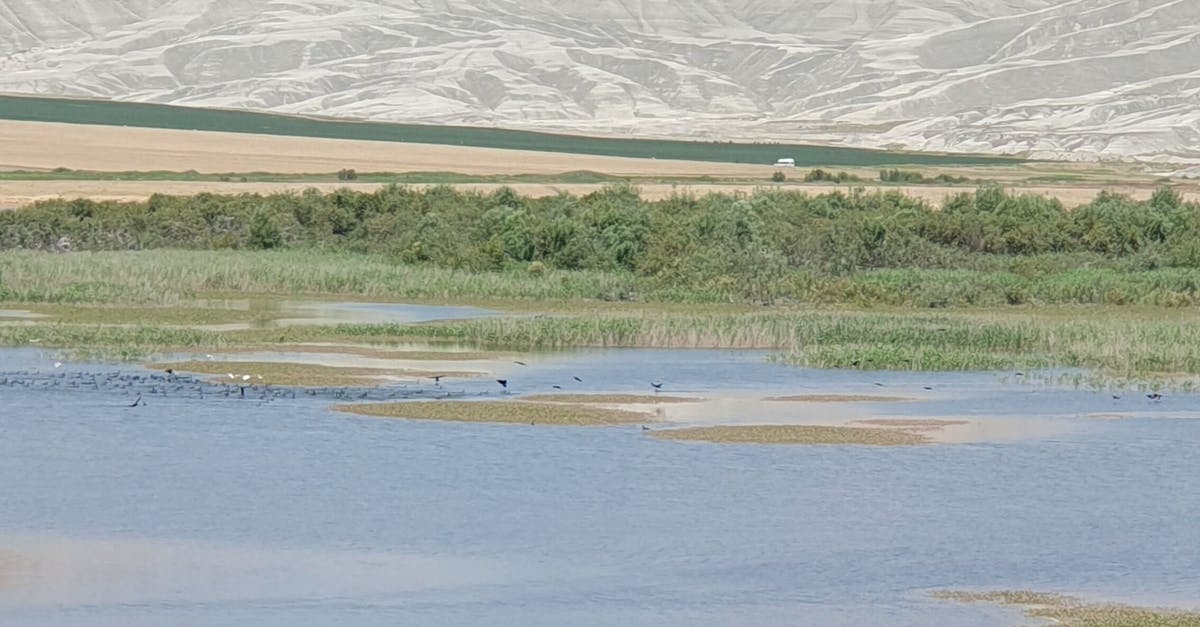OPCW
-
OPCW Asia Meeting in New Delhi: The Organisation for the Prohibition of Chemical Weapons (OPCW) held its 23rd Regional Meeting for Asia in New Delhi from July 1st to 3rd, 2025.
-
Focus on CWC Implementation: The meeting aimed to share best practices, enhance cooperation, and address challenges in the national implementation of the Chemical Weapons Convention (CWC).
-
Promoting a Chemical Weapons-Free World: The ultimate goal was to reinforce the global commitment to preventing the proliferation and use of chemical weapons.
-
Key Functions of OPCW: The OPCW oversees the global effort to eliminate chemical weapons, verifies compliance with the CWC, and assists member states in meeting their obligations. It also promotes the peaceful use of chemistry.
-
India’s Role: India, an original signatory to the CWC, hosted the meeting through its National Authority (NACWC). India’s Chemical Council (ICC) was recognized with the OPCW-The Hague Award 2024 for its role in promoting chemical safety.
-
Nobel Peace Prize Recipient: The OPCW was awarded the Nobel Peace Prize in 2013 for its extensive efforts in eliminating chemical weapons.
-
Regional Cooperation: The meeting facilitated exchange of experiences and strengthened regional cooperation among Asian nations in implementing the CWC, covering legislative frameworks, chemical safety, industry involvement, and emerging technologies like AI.
Bharat Age Biomarkers
- BHARAT Study Launched: The Indian Institute of Science has launched the BHARAT (Biomarkers of Healthy Aging, Resilience, Adversity, and Transitions) study.
- Purpose: To map aging biomarkers and establish a “Bharat Baseline” for healthy aging specific to the Indian population.
- Why India-Specific Data Needed: Current Western biomarkers may not be accurate for Indians, risking misdiagnosis and ineffective treatment due to differences in genetics, environment, and lifestyle.
- Rising Age-Related Diseases: India faces a projected surge in diseases like Parkinson’s (168% increase by 2050) and dementia (200% rise), highlighting the need for early detection.
- Ageing Complexity: Ageing is driven by multiple factors (molecular, cellular, environmental, lifestyle, socioeconomic) and chronological age doesn’t always reflect biological age.
- Biomarker Scope: The study will analyze genomic, proteomic, metabolic, environmental, and lifestyle indicators.
- AI & Machine Learning: Will be used to analyze complex data, predict health outcomes, and design effective interventions.
- Addressing Gaps: Aims to correct disparities in health data for the Global South, where Western cut-offs for markers like cholesterol and CRP may not be applicable.
- Challenges: Obtaining samples from healthy adults, securing funding, and capturing India’s diverse population are anticipated challenges.
RECLAIM
- Coal Ministry Launching RECLAIM Framework: Union Minister of Coal and Mines Sh G Kishan Reddy to launch RECLAIM on July 4th, 2025.
- Purpose: Aims to guide mine closure and repurposing, focusing on community participation and sustainable development.
- Developed By: Coal Controller Organisation in collaboration with the Heartfulness Institute.
- Addressing Mine Closure Impacts: Seeks to ensure a just transition for mining communities, mitigating environmental and livelihood effects.
- Key Features:
- Structured, step-by-step guide for inclusive community engagement.
- Actionable tools, templates, and methodologies tailored for India.
- Emphasis on gender inclusivity, vulnerable groups, and Panchayati Raj Institutions.
- Balances ecological restoration with socio-economic well-being.
- RECLAIM Approach (Acronym):
- Reach Out (understand community needs)
- Envision (define shared future)
- Co-Design (plan together)
- Localise (adapt strategies)
- Act (implement with participation)
- Integrate (ensure sustainability)
- Maintain (sustain progress)
- Strategic Focus: Community-centric transition, field-tested methodologies, inclusivity, local governance, and ecological restoration.
- Alignment with Existing Schemes: Supports objectives of NMET, PMJJBY, PMSBY, MMDR Act, DMF, Mineworkers Welfare Fund, and Skill Development Initiatives for community welfare.
Const. Spirit: Soc. & Sec.
-
RSS Leaders’ Demand: Recent calls by RSS leaders to remove “socialism” and “secularism” from the Preamble.
- Why it’s news: This challenges foundational values of the Indian Republic.
-
Inherent Values: Socialism and secularism were inherent in the Constitution’s spirit and text since inception, not just added by the 42nd Amendment (1976).
- Why it matters: Demonstrates the long-standing commitment to these principles.
-
Socialism in the Constitution:
- Preamble: Enshrines “socialist” for social, economic, and political justice.
- Directive Principles: Articles 38 and 39 promote equitable wealth distribution and public welfare (e.g., Right to Education Act, MNREGA).
- Judicial Recognition: Supreme Court has defined Indian socialism as “democratic socialism” aiming to end poverty and inequality (D.S. Nakara v. Union of India).
- Why it matters: Ensures equal opportunity and dignity for all citizens.
-
Secularism in the Constitution:
- Indian Secularism: Promotes positive secularism – equal respect and protection for all religions, not just neutrality.
- Articles 25-28 & 15: Guarantee freedom of religion and non-discrimination on religious grounds.
- Basic Structure: Reaffirmed as part of the unamendable Basic Structure by the Supreme Court (Kesavananda Bharati, Bommai judgments).
- Why it matters: Protects religious freedom and India’s pluralistic fabric.
-
Criticism of Removal:
- Assault on Vision: Seen as an attack on the foundational vision of India.
- Majoritarian Theocracy: Could promote majoritarian rule over inclusive democracy.
- Dismantling Pluralism: Risks breaking down India’s pluralistic framework and deepening divisions.
-
Basic Structure Doctrine: Parliament cannot alter the Basic Structure, which includes secularism and socialism.
- Why it matters: Even if words are removed from the Preamble, the spirit remains legally protected in enforceable rights.
-
Constitutional Morality: Ambedkar emphasized “constitutional morality” and equal protection.
- Why it matters: Safeguarding these principles is crucial during ideological contestations.
AI Copyright
-
US Courts Side with Tech Companies on AI Training Data: Recent rulings found that training generative AI models like ChatGPT and Gemini on copyrighted materials does not violate copyright law under current interpretations.
-
“Fair Use” and “Transformative” Use Arguments Prevail: Tech companies successfully argued that using copyrighted works for AI training is “transformative” and falls under the fair use doctrine, allowing limited use for broader purposes.
-
Divergent Judicial Reasoning: Judges used different legal bases, one focusing on the “lawful acquisition” of data and another on the lack of proven market harm from AI-generated content.
-
Ongoing Legal Battles: Despite these rulings, numerous lawsuits (at least 21 in the US) remain, addressing direct copying and removal of copyright information, with cases like Kadrey v. Meta and The New York Times v. OpenAI still active.
-
Global Legal Scrutiny: Legal challenges are also emerging internationally, particularly in the UK and Europe, questioning the need for AI companies to license training data.
-
AI Training Data Sources: Generative AI models learn by identifying patterns in vast datasets, which include books, articles, images, and sounds often sourced from the internet.
-
Creator Concerns: Creators argue that AI training on their work, especially from pirated sources, amounts to “theft” and undermines their ability to earn a living by allowing AI to generate similar content cheaply.
-
Intellectual Property in India: The provided context also outlines various Indian IP types, including Patents, Trademarks, Copyright, Designs, Geographical Indications, Trade Secrets, and Plant Varieties Protection, highlighting the diverse legal landscape for protecting creations.
DAC Defence Buys
- DAC Approves ₹1.05 Lakh Crore Defence Deals: The Defence Acquisition Council (DAC), chaired by the Defence Minister, approved 10 capital acquisition proposals totaling approximately ₹1.05 lakh crore.
- Focus on Indigenous Sourcing (Buy Indian-IDDM): All proposals fall under the Buy (Indian-Indigenously Designed, Developed, and Manufactured) category, reinforcing India’s self-reliance in defence manufacturing (“Aatmanirbhar Bharat” initiative).
- Enhanced Operational Preparedness: Procurements aim to boost mobility, air defence, maritime security, and supply chain management for the Indian Armed Forces.
- Key Systems Approved:
- Armoured Recovery Vehicles (battlefield recovery/maintenance).
- Electronic Warfare Systems (situational awareness/combat).
- Surface-to-Air Missiles (air defence).
- Moored Mines (coastal deterrents).
- Mine Counter Measure Vessels (naval mine detection/clearance).
- Super Rapid Gun Mounts (naval artillery).
- Submersible Autonomous Vessels (undersea reconnaissance).
- Integrated Common Inventory Management System (tri-services supply chain).
- Strategic Impact: These acquisitions will modernize all three services, strengthen maritime borders, mitigate underwater threats, and reduce reliance on foreign imports.
- DAC’s Role: The DAC is India’s primary decision-making body for defence procurement, streamlining acquisitions and ensuring alignment with national security needs and indigenisation goals.
US Global Influence
-
New Wave of U.S. Imperialism: Recent U.S. foreign policy, especially under “America First,” exhibits traits of imperialism, evident in West Asian military actions. This raises concerns about unilateralism, military dominance, diplomatic coercion, and the weakening of multilateral institutions, reflecting a shift in global power dynamics.
-
Declining but Aggressive Hegemon: While U.S. hegemonic control may be declining (evidenced by neoliberalism crisis and trade wars), its foreign policy remains aggressive. Policies like tariffs on allies and unilateral military actions (e.g., striking Iranian nuclear facilities without sanction) demonstrate this.
-
Violation of Rules-Based Order: The U.S. has increasingly departed from the international rules-based order it helped establish, relying on pre-emptive military actions and pursuing strategic interests without global consensus, mirroring traditional imperial powers.
-
Economic Imperialism: U.S. hegemony is also maintained through economic means like sanctions and control over global finance (SWIFT, IMF), coupled with the weaponization of trade policies. The “America First” doctrine actively undermines multilateral agreements.
-
Rise of Multipolarity: The global order is evolving towards multipolarity, necessitating stronger global blocs to counterbalance U.S. and China-led poles. Nations like India are crucial for a non-aligned, sovereign foreign policy.
-
India’s Role: India acts as a “swing state,” prioritizing strategic autonomy to protect its economic and energy interests. It should champion Global South solidarity against debt crises, war, and sanctions, advocating for a pluralistic international order.
-
Modern Imperialism vs. Cold War: Contemporary U.S. imperialism differs from the Cold War era due to the rise of China, a fragmented West, and a growing demand for multipolarity.
India’s Custodial Abuse
-
Why in News: The custodial death of Ajith Kumar in Tamil Nadu has reignited concerns about custodial torture in India, with the Madras High Court noting the severity of injuries.
-
Nature of Custodial Torture: It involves inflicting physical or mental suffering on individuals in custody, a severe human rights violation leading to custodial deaths.
-
Prevalence in Tamil Nadu: Tamil Nadu has a history of police brutality, with 490 custodial deaths reported between 2016-2022. Notable cases include Ambasamudram (2023) and Sathankulam (2020).
-
National Statistics: Between 2016-2022, India recorded 11,656 custodial deaths. Uttar Pradesh had the highest number (2,630), while Tamil Nadu led among southern states.
-
Lack of Accountability: Despite arrests and chargesheets, there have been zero convictions for custodial deaths between 2017-2022 across India. Similarly, only 3 out of 74 human rights violation cases against police resulted in convictions during the same period.
-
Disproportionate Impact on SCs: In Tamil Nadu, Scheduled Castes (SCs) face disproportionate custodial torture. In 2022, SCs constituted 38.5% of detenues, significantly higher than their 20% population share.
-
Legal and Constitutional Safeguards:
- Constitutional: Articles 14 (equality), 21 (life and personal liberty, freedom from torture), 20(1) (no retrospective punishment), and 20(3) (protection against self-incrimination).
- Legal (New Codes): Bharatiya Nyaya Sanhita, 2023 (Section 120 penalizes causing hurt for confessions), Bharatiya Nagarik Suraksha Sanhita, 2023 (Section 35 mandates documented arrest procedures), Bharatiya Sakshya Adhiniyam, 2023 (Section 22 invalidates coerced confessions).
- International: UN Charter, ICCPR, UDHR, UN Convention Against Torture (UNCAT) are relevant, though India has not ratified UNCAT.
-
Challenges: Lack of specific anti-torture legislation, weak enforcement leading to impunity, overburdened institutions like Human Rights Commissions, fear of reprisal among victims, and systemic judicial delays.
-
Suggested Reforms: Enact a specific Prevention of Torture law, ratify UNCAT, ensure institutional accountability, reform policing structures, introduce human rights training for police, and establish independent oversight and investigative bodies.

AI Crawler Block
-
Major Publishers Blocking AI Crawlers: Leading US and UK publishers are preventing AI web crawlers from accessing their content.
- Why in News: This action highlights concerns about unauthorized use of copyrighted material for AI training and has prompted similar demands in India for consent-based safeguards and fair revenue sharing.
-
AI Web Crawlers Explained: Automated software that collects internet content to train AI models (LLMs) or for live information retrieval by AI assistants.
- Types: Model training crawlers (e.g., GPTBot) and live retrieval crawlers (used by Bing, ChatGPT).
-
Concerns for India:
- Lack of Regulatory Framework: India lacks oversight for AI companies accessing web content, allowing large firms to benefit from Indian content without consent or compensation for smaller publishers.
- Copyright Enforcement: Existing copyright laws are not equipped for AI training data rights or AI-generated derivative works. “Fair use” versus “unlicensed training” lacks clear interpretation.
- Ethical AI Use: Lack of transparency in data sources for AI training leads to unacknowledged creators, potential biases, and inaccurate AI outputs.
-
Indian Publishers’ Stance: Groups like DNPA are protesting “unauthorized data theft” and urging the government to act against rampant data scraping, advocating for consent-based access and a licensing framework.
-
Global Shift & India’s Path:
- Cloudflare’s Default Blocking: Signals an industry shift, allowing website owners to control AI crawler access.
- India’s Response Needed: India should study global frameworks (EU’s AI Act, US legal challenges) to develop its own model, defining “unauthorized data scraping” and establishing consent-based licensing. Collaboration with platforms like Cloudflare for technical blocking tools is also recommended.
Kusumae Garcinia
- New Tree Species Discovered: A new species of tree, Garcinia kusumae, has been identified in Assam, India, adding to the region’s botanical diversity.
- Local Name & Genus: It is locally known as “thoikora” in Assamese and belongs to the Garcinia genus, which has significant global and Indian representation.
- Named in Honour: The species is named kusumae in honor of Kusum Devi, the late mother of one of the study’s authors, Jatindra Sarma. This marks a notable instance of an Indian botanist naming multiple species after family members.
- Morphological Uniqueness: Garcinia kusumae is a dioecious evergreen tree, growing up to 18 meters, and can be distinguished from related species by its flower structure and fruit resin.
- Ethnobotanical Significance: The fruit has cultural and medicinal uses, including preparation into a sherbet for heatstroke prevention and traditional remedies for diabetes and dysentery. The seed aril is also consumed raw.
- Research Publication: The discovery and description of Garcinia kusumae were published in Feddes Repertorium, a peer-reviewed botanical journal.
CITES at 50
-
50th Anniversary: CITES, the Convention on International Trade in Endangered Species of Wild Fauna and Flora, celebrated 50 years on July 1, 2025.
- Why in News: This milestone marks half a century of international efforts to regulate wildlife trade.
-
What is CITES?
- Also known as the Washington Convention, signed in 1973 and effective from 1975.
- Aims to ensure international wildlife trade is sustainable, legal, and traceable.
- Covers over 40,000 species of animals and plants.
- Administered by the UN Environment Programme (UNEP).
- Has 185 Parties, including India (member since 1976).
-
How CITES Works:
- Regulates trade through export, import, and re-export permits.
- Member countries appoint management and scientific authorities.
- Uses an Appendices system to categorize species based on threat levels (Appendix I: endangered, Appendix II: controlled trade, Appendix III: species requiring cooperation).
-
Importance of CITES:
- Addresses the threat of extinction posed by unregulated wildlife trade and habitat loss.
- Considered a highly effective environmental agreement.
- Supported by tools like the CITES Trade Database.
- Has helped conserve species like African elephants and pangolins.
- Initiatives like MIKE have reduced elephant poaching.
- India has strengthened cooperation by including CITES-listed species in its Wild Life (Protection) Amendment Act, 2022.
- Complements work of UN entities like FAO and UNDP.

Kariyachalli Island
-
Kariyachalli Island Facing Imminent Submergence: The island, located in the Gulf of Mannar, has shrunk by over 70% since 1969 and is projected to be submerged by 2036 due to erosion, rising sea levels, and coral reef degradation.
-
Vital Ecosystem Under Threat: Kariyachalli is part of India’s major coral reef regions and a crucial habitat for endangered species like dugongs, which depend on seagrass.
-
Conservation Efforts Under TNSHORE Project: Tamil Nadu is launching the TNSHORE project to protect the island. This initiative includes installing artificial reef modules, planting seagrass, and restoring coral habitats to stabilize the shoreline and reduce wave energy.
-
Island’s Shrinking Size: The island’s landmass has drastically reduced from 20.85 hectares in 1969 to under six hectares in 2024, highlighting the urgency of conservation.
-
Coral Bleaching Exacerbates Risk: Approximately 30% of the coral around the island has bleached, making the island more vulnerable to erosion.
EDC Crisis
- Health Risks of EDCs in Plastic Waste: EDCs in plastic waste pose significant health risks, including hormonal disruptions, reproductive dysfunction, and chronic diseases like cancer.
- Microplastics as Carriers: Microplastics, found in human tissues like lungs and placentas, are biologically active and carry EDCs, leading to health issues such as obesity, diabetes, and metabolic disorders.
- Vulnerable Populations at Threat: Informal waste sectors and plastic pollution disproportionately affect vulnerable populations with exposure to EDCs.
- Evidence in Human Tissues: Studies show microplastics, containing EDCs, are present in human reproductive tissues, highlighting direct exposure pathways.
- India’s Plastic Crisis: India faces a growing plastic waste crisis, necessitating stronger measures to monitor and mitigate exposure to microplastics and EDCs.
- Need for Public Awareness: Public health efforts must focus on raising awareness and developing strategies to reduce plastic pollution and its EDC-related effects.
- EDCs Interfere with Hormones: EDCs mimic or block hormones, disrupting growth, metabolism, and reproductive health.
- Sources of EDCs: EDCs are found in pesticides, plastics, industrial chemicals, and pharmaceuticals, with examples like BPA and phthalates.
- Long-Term Health Impacts: Exposure, especially during development, can cause hormonal imbalances, infertility, developmental issues, and increased cancer risk.
Agroforestry Rules
- Streamlining Regulations: Model Rules issued by MoEFCC simplify tree felling and transit permissions on agricultural lands to promote agroforestry.
- Ease of Doing Business: Aims to reduce procedural hurdles for farmers and stakeholders involved in tree-based farming.
- National Timber Management System (NTMS) Portal: A digital platform for registering plantations, applying for felling permits, and tracking applications using geo-tagged data and photos.
- Promoting Domestic Timber: Encourages local timber production to meet demand, support wood-based industries, and potentially boost exports.
- Boosting Rural Incomes: Supports farmers by facilitating tree cultivation on farmlands, promoting high-value species for enhanced income.
- Environmental Benefits: Aims to increase tree cover, improve soil health, conserve biodiversity, and reduce pressure on natural forests, contributing to climate resilience.
- Transparency and Monitoring: Utilizes technology like remote sensing and image recognition for real-time monitoring and traceability.
- State Level Committee (SLC) Role: Responsible for guiding states and UTs in implementing the rules and empanelling verification agencies.
- Alignment with Global Commitments: Supports India’s commitments under UNFCCC and CBD, and SDGs 2, 13, and 15.
- Farmer-Friendly Approach: Encourages sustainable agricultural practices while balancing ecological needs with economic development in rural areas.

















